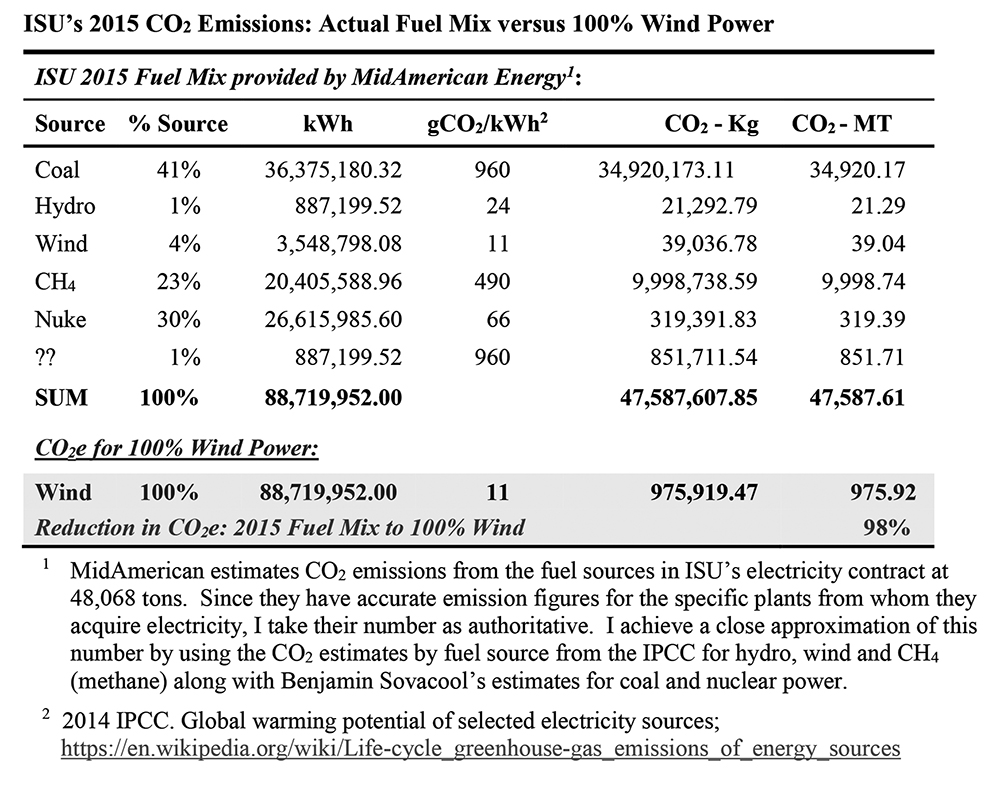
WILLIAM RAU
Illinois universities help fuel the climate crisis. First, no Prairie State university has dumped fossil fuel investments. These money-losing, risky holdings serve primarily to legitimize a planet-destroying industry.
Second, as large fossil fuel burners, universities are major carbon emitters. Illinois State University (ISU), for example, consumes yearly about 90 million kilowatt hours of electricity, 5 million therms of natural gas, and 172 million gallons of energy-consuming water (https://facilities.illinoisstate.edu/reference/utilities/).
As the top carbon emitter in Normal, the town faces a major barrier to reducing emissions unless ISU is on board. ISU is not on board.
Third, unlike Colorado State or Stanford University, no Illinois University has sufficiently internalized sustainability into its operations, curriculum, research, and outreach to serve as a national educational model, not according to the Association for the Advancement of Sustainability in Higher Education (https://reports.aashe.org/institutions/rated/).
The University of Illinois (U of I), however, comes close and has become skilled at the single most important thing a university has to get right: the construction, implementation, and continuing improvement of a climate action plan: a CAP for short (https://icap.sustainability.illinois.edu/).
A CAP aims to achieve two things: (1) draw down campus carbon emissions to zero by 2050, urgently sooner; and (2) increase overall campus sustainability with reduced water use, increased recycling, etc.
U of I’s three CAPs formulate “specific, measurable, achievable, relevant, and time-bound objectives” for reducing carbon and increasing sustainability. Pursuit of 47 concrete objectives in its 2015 CAP culminated is a 25% reduction in U of I’s emissions by 2019. Power plant upgrades and retrofits of 60 buildings achieved an impressive 38% reduction in building energy intensity (https://sustainability.illinois.edu/campus-sustainability/icap/).
Next, the campus built two solar farms with 27,000 megawatts of annual output, and purchased another 25,000 megawatts of wind power from the Rail Splitter Wind Farm in Tazewell County. Renewable energy drives carbon output into the ground as seen in the table below. That table shows how wind power would slash carbon at Illinois State University (ISU). Given its heavy reliance on coal and natural gas, ISU’s 2015 electricity purchases created 48,000 tons of CO2 that year. In contrast, wind power would have cut yearly CO2 output to 980 tons, a 98% reduction.
The U of I has set sail by the North Star, but with an albatross around its neck: the Abbott Power Plant. A top-flight combined heat and power plant, Abbott provides the campus with nearly all of its heat and a lot of its electricity.
The problem? It burns scads of gas and some coal. Not easily replaced, not easily converted to carbon-free energy, Abbott is a dilemma. Abbott advocates do not help by pushing unworkable ideas, such as carbon capture, a serial commercial failure, or a baby nuclear reactor, which is commercially untested and a town & gown sticky wicket.
At least it has a living, evolving plan; most universities do not. ISU, a case in point, has no CAP, no master plan for building retrofits, no renewable energy, and no reductions in energy use.
References
Best Colleges 2020. Greenest Universities. BestColleges.com; https://www.bestcolleges.com/features/greenest-universities/
Crane, Tracy. 2016 (Dec 9). Deal with wind farm to boost UI’s clean-energy use;
http://www.news-gazette.com/news/local/2016-12-09/deal-wind-farm-boost-uis-clean-energy-use.html
iCAP 2015. The University of Illinois Climate Action Plan; https://icap.sustainability.illinois.edu/project/2015-illinois-climate-action-plan-2015-icap
iCAP 2020. The University of Illinois Climate Action Plan; https://sustainability.illinois.edu/campus-sustainability/icap/
Lillian, Betsy. 2016 (Dec 9). Wind to Help Power University of Illinois for the Next Decade; http://nawindpower.com/university-of-illinois-signs-long-term-wind-agreement
STARS. 2019 (Feb 29). Illinois State University Report. Bronze Rating. Association for the Advancement of Sustainability in Higher Education; https://stars.aashe.org/institutions/illinois-state-university-il/report/

